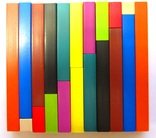Introduction

Math Centers, also called Learning Stations, provide an opportunity for students to practice and apply skills and strategies taught within the classroom. While students are engaged in purposeful centers, teachers have the opportunity to work individually or with small, flexible groups to meet the individual needs of students.
Preparing students to work independently in centers can take some time. The goal is to eventually have a teacher center where you can focus on small group instruction while other students work independently in a focused, quiet way.
Centers can:
- be an integral part of instruction for all students;
- provide meaningful, independent practice based on the Standards, curriculum objectives and students’ needs;
- include a variety of activities differentiated to meet the needs of students;
- change regularly according to the needs of students;
- hold students accountable for the work in which they are engaged;
- allow teachers to assess students’ math skills, strategies and understandings.
Establishing Routines
It is important to build a community of learners so that students will be able to work independently at centers since you will be engaged with other students during this time. Early childhood and elementary educators will likely use this structure across content areas.
Students can be scheduled at centers using either a rotation system or a self selected system. When using a rotation system, a designated amount of time is given to each center before students may move on to the next. Using a self selected system, students move themselves through centers in a systematic way, using contracts or planning sheets to record what activities have been completed.
You may choose to include a reflection sheet for math centers to help you and your students keep track of learning. Reflection sheets are available in the online resources folder.
When introducing Centers for the first time it is important to:
- communicate clear, explicit, high expectations and develop a few non-negotiable rules established jointly by both you and your students;
- be available to assist students during center time and reinforce appropriate behaviors;
- instruct, model and provide guided practice opportunities before placing new tasks in centers;
- hold very brief "mini lessons" every day prior to children going to centers focusing on how to use the equipment and materials, how to share materials, how to take turns, put things away etc. During this time you might have two students role-play the use of the materials while others critique their efforts or model how to solve a problem without teacher assistance (e.g. introduce the “Ask Three before Me” strategy to encourage students to ask three different classmates to help solve an issue during center time before coming to you with a problem).
Types of Centers
Whenever possible, center activities should be open-ended, allowing for multiple responses so that students can learn in their zone of proximal development. Centers can provide for a mixture of independent as well as paired tasks. A center should generally have between two and six students in order to encourage students to talk with one another, problem solve together, and assist one another in their learning.
This page was last updated on June 22, 2023

